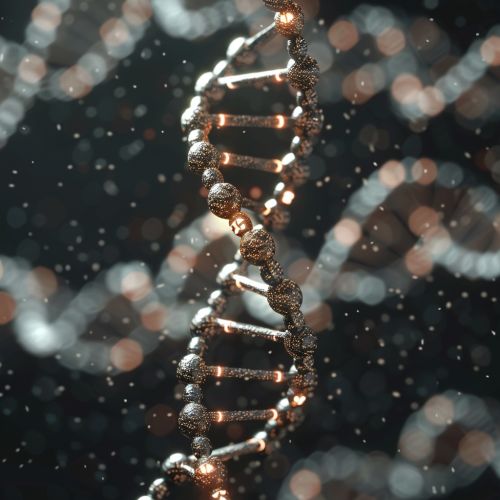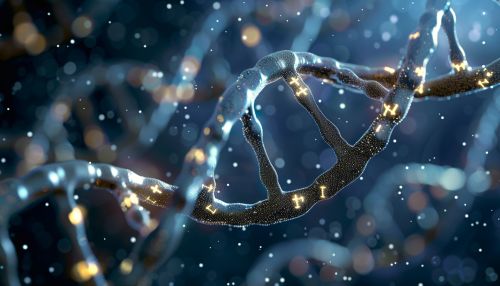Base modification
Introduction
Base modification, also known as DNA modification, is a process that involves the chemical alteration of the four primary bases in Deoxyribonucleic Acid: adenine (A), cytosine (C), guanine (G), and thymine (T). This process is crucial for a variety of biological functions, including regulation of gene expression, DNA repair, and DNA replication.


Types of Base Modifications
There are several types of base modifications, each with its own specific biological function. The most common types include methylation, acetylation, and phosphorylation.
Methylation
Methylation is a process that involves the addition of a methyl group to the DNA molecule. This modification usually occurs at the carbon 5 position of the cytosine ring or the nitrogen 6 position of the adenine ring. DNA methylation is a critical process in cellular differentiation and embryonic development. It also plays a significant role in X-chromosome inactivation, genomic imprinting, and preservation of chromosome stability.
Acetylation
Acetylation is another common type of base modification. It involves the transfer of an acetyl group from acetyl coenzyme A (Ac-CoA) to the DNA molecule. DNA acetylation primarily occurs at the nitrogen 7 position of the adenine ring. This modification is crucial for the regulation of gene expression and the structure of the chromatin.
Phosphorylation
Phosphorylation involves the addition of a phosphate group to the DNA molecule. This modification usually occurs at the hydroxyl group of the deoxyribose sugar. DNA phosphorylation is essential for DNA replication and repair, as well as cell cycle regulation.
Mechanisms of Base Modification
The mechanisms of base modification involve several enzymatic processes, including DNA methyltransferases, histone acetyltransferases, and kinases.
DNA Methyltransferases
DNA methyltransferases (DNMTs) are enzymes that catalyze the transfer of a methyl group from S-adenosylmethionine (SAM) to the DNA molecule. There are three main types of DNMTs: DNMT1, DNMT3a, and DNMT3b. DNMT1 is responsible for maintaining methylation patterns during DNA replication, while DNMT3a and DNMT3b are involved in de novo methylation, which establishes new methylation patterns.
Histone Acetyltransferases
Histone acetyltransferases (HATs) are enzymes that catalyze the transfer of an acetyl group from Ac-CoA to the DNA molecule. HATs play a crucial role in the regulation of gene expression by modifying the structure of the chromatin.
Kinases
Kinases are enzymes that catalyze the transfer of a phosphate group from ATP to the DNA molecule. Kinases are essential for DNA replication and repair, as well as cell cycle regulation.
Role in Disease
Abnormal base modification patterns can lead to a variety of diseases, including cancer, neurological disorders, and autoimmune diseases.
Cancer
In cancer, abnormal methylation patterns can lead to the silencing of tumor suppressor genes, promoting tumor growth and progression. Similarly, abnormal acetylation patterns can lead to the overexpression of oncogenes, contributing to tumorigenesis.
Neurological Disorders
In neurological disorders, abnormal methylation patterns can lead to the silencing of genes critical for neuronal function, contributing to the development of diseases such as Alzheimer's and Parkinson's.
Autoimmune Diseases
In autoimmune diseases, abnormal methylation patterns can lead to the overexpression of autoantigens, triggering an immune response against the body's own cells.
Future Directions
Understanding the mechanisms and implications of base modification is crucial for the development of novel therapeutic strategies for a variety of diseases. Future research in this field will likely focus on developing drugs that can modulate base modification patterns, as well as diagnostic tools that can detect abnormal base modification patterns in early stages of disease.
